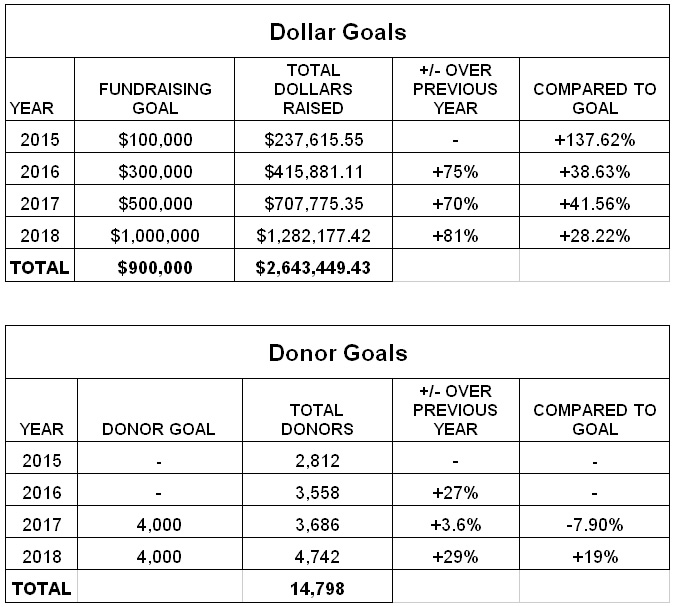Do you remember this old advertising slogan?
"How do you spell relief? R-O-L-A-I-D-S."
Now, how does your nonprofit spell success?
This time of year, do you spell it "B-U-D-G-E-T?"
If June 30 is the end of your fiscal year, you might be focused on year-end fundraising and meeting your financial goals. And you're likely in the midst of planning for next year.
Here's a question: Does your leadership look at your budget (and the money you raise), and use the bottom line to determine whether or not it was a successful year?
If so, I want you to remember that one number doesn't tell your whole story.
In fact, there are many ways to measure fundraising success.
So it makes sense to set goals beyond your budget. Keep this in mind as you're planning for the "new year."
LOOK BEYOND THE BOTTOM LINE
Last month, communities across the country held a one-day fundraising campaign for local charities.
Take Bozeman, Montana, which held its fourth annual "Give Big" Day this year. In their first year, they raised nearly $240,000 in 24 hours. This year, they set a $1 million goal.
Beyond that, the organizers set other goals, including the total number of donors and the number of charities that would receive donor-designated gifts. By doing this, their focus wasn't just on the bottom line.
Also, by having multiple goals and targets, the organizers positioned the campaign to succeed in some ways, even if it didn't succeed in all of them. (They crushed all of their goals, by the way - and they were ambitious goals.)
Thanks to the Bozeman Area Community Foundation for sharing the following Give Big goal charts and results:

GOALS ARE GREATER THAN THE SUM OF THEIR PARTS
Bridget Wilkinson is the Executive Director of the Bozeman Area Community Foundation, which organizes the Give Big Gallatin Valley campaign. She admits that, while the bottom line is important, it's not the most important piece of this campaign.
"The financial goal is a big deal for us, we want to be able to help support local nonprofits," Bridget said. "A bigger goal is the number of donors who participate — that number is powerful, whether people gave $10,000 or $2."
The 2018 goal for the number of donors was 4,000. The actual number of donors was 4,742. Program Manager Darby Lacey shared that 764 of those were first-time donors.
Darby added, "We were pleasantly surprised by this statistic. Next year, I think we will set a 'brand new donor goal.'"
For fundraising campaigns, it's important to set multiple goals.
One reason is so you can measure different aspects of your performance - and not rely on the bottom line, which doesn't tell the whole story.
Plus, with information like the Give Big charts above, the organizers can compare this year's performance against the previous years and see year-over-year growth.
Information like this will also help the organizers set targets and stretch goals for next year.
HOW YOU CAN USE THIS INFORMATION
The dictionary defines "success" as "the accomplishment of an aim or purpose."
That means, in order to succeed, you need to have an aim or purpose. In fundraising, you need goals. You need targets. (And you need a plan to get there.)
If your fiscal year starts on July 1, you're probably in the process of finalizing next year's budget and setting your fundraising goals.
And while meeting your budget goal is certainly important, remember that there are many ways to measure your nonprofit's financial success and year-over-year growth in giving.
Stay tuned for next time, when I'll offer some specific suggestions about what you can measure (and how to do it).
That way, you can use different data points from your past results to inform your fundraising efforts in the "new year."
Photo credit(s): Pixabay and ArielRobin
Need help creating a fundraising plan? Laura Rhodes can help.
Send a message to start the conversation and learn how Laura can help you and your organization.
You may also be interested in upcoming training events.